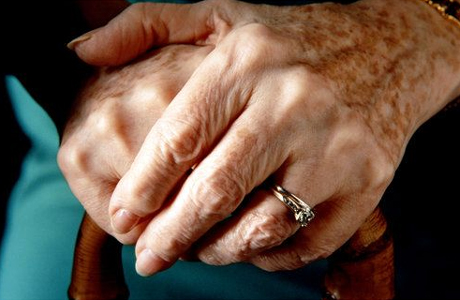News
The hidden cost of cohabiting in later life

Older unmarried couples living together may be missing out on tax breaks and state pension rights which are only available to those who are legally married, said Royal London.
The insurance firm said that people over pension age are the fastest growing group of cohabitees.
Data for England and Wales for the period 2002-2015 shows that the proportion of adults who were cohabiting rose by about one third over the period from 7.5% to 10%. But the proportion of people over state pension age who were cohabiting tripled over the same period. The rate for those aged 65-69 rose from 1.5% to 4.5%, and the rate for those aged 70 and over rose from 0.7% to 2.3%.
Over 300,000 people aged over 65 are living together as part of an unmarried couple. Strikingly, the vast majority of these have previously been married but the marriage ended in divorce or in widowhood and they have chosen not to marry again.
Old-fashioned tax system
Despite this growing social trend, the tax and benefits system is still largely based around the assumption that the world is divided into two sorts of people: single people living alone or married people living together. Many tax and benefit rules do not recognise cohabitation and thereby treat cohabiting couples as second class citizens.
The report highlights three areas of particular relevance to older cohabiting couples:
Inheritance tax (IHT) – members of married couples enjoy significant inheritance tax benefits over their cohabiting counterparts. They can pass their wealth to the surviving spouse free of inheritance tax and they can also transfer any unused portion of their inheritance tax threshold to their spouse. Neither of these options is available to cohabiting couples.
Income tax – there are two special tax allowances for married couples only; the old Married Couples Allowance applies only to the oldest married couples and is worth up to £844 per year; and a new Marriage Allowance introduced in April 2015 and is worth £230 per year in 2017/18. A cohabiting couple who missed out on the Marriage Allowance in each of the three years since it was introduced would lose a total of £662.
State pension – most of today’s pensioners reached pension age before 6th April 2016 under the old state pension system; under the old system, there were extensive rights to derive an improved state pension following the death of a spouse; but these rights do not apply to cohabiting couples; an older married woman could easily see her state pension boosted by around £2,500 per year following the death of her husband, but a cohabiting partner would miss out.
Helen Morrissey, personal finance specialist at Royal London, said: “With each passing year more and more people are choosing to live together as couples, and it is amongst those over pension age where the growth has been the most dramatic.
“But individuals need to be aware that there are many tax breaks and state pension advantages which apply only to married couples. For example, the family of a cohabiting couple could face an extra £70,000 inheritance tax bill compared with the heirs of a married couple.
“Similarly, cohabiting couples are excluded from income tax breaks worth hundreds of pounds a year and from the rights to inherit a state pension when one partner dies.”